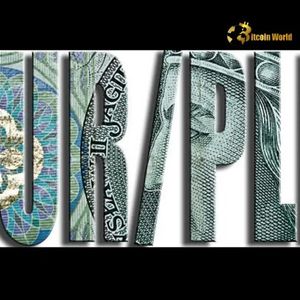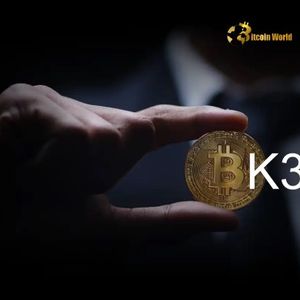A widely discussed opinion by crypto commentator Stellar Rippler presents a provocative interpretation of the U.S. Securities and Exchange Commission’s (SEC) lawsuit against Ripple and XRP. Rather than framing the case as a straightforward regulatory action regarding securities law, the tweet asserts that the legal action was strategically timed to delay or obscure the development of Ripple’s private ledger, an institutional-grade blockchain system that could potentially alter the global financial landscape. According to the tweet, the real focus of the SEC lawsuit was not on protecting retail investors or establishing legal clarity around XRP, but on buying time. Time, the author suggests, for the United States and other global institutions to catch up with the infrastructure Ripple was quietly building under the radar. (1/ ) Ripple’s Private Ledger: The Real Reason the SEC Lawsuit Had to Happen You think the SEC sued Ripple to protect retail investors? Think again. This wasn’t about securities. This was about a private financial network being built under everyone’s noses… pic.twitter.com/ohP8JeGjNT — Stellar Rippler (@StellarNews007) May 30, 2025 Capabilities and Purpose of the Private Ledger Central to this argument is Ripple’s announcement in 2021 of a private version of the XRP Ledger, which Stellar Rippler describes as being specifically designed for use by central banks and major financial institutions. This private ledger, unlike the public XRP Ledger (XRPL), is not accessible for public transaction tracking or speculative trading. It reportedly supports central bank digital currency (CBDC) issuance, offers privacy and transaction control, and is capable of processing over 10,000 transactions per second, significantly more than most existing blockchain networks. The tweet states that this private infrastructure was never meant for public hype or mass speculation. Rather, it was engineered to facilitate institutional settlement at scale, enabling central banks to conduct secure and efficient digital asset transfers with sovereignty and control. Key features, such as enhanced privacy, scalability, and customizable monetary frameworks, make it an attractive solution for governments and financial regulators. We are on twitter, follow us to connect with us :- @TimesTabloid1 — TimesTabloid (@TimesTabloid1) July 15, 2023 Timing of the SEC Lawsuit and Global Financial Implications Stellar Rippler links the timing of the SEC lawsuit to this development. He said the enforcement action came just months before Ripple made its private ledger announcement. The tweet implies that regulators, and possibly influential financial entities, were already aware of the ledger’s capabilities and sought to delay its rollout. The idea is that the U.S. was unprepared to cede control of financial infrastructure that Ripple’s technology could impact, particularly systems like SWIFT , Fedwire, and other interbank settlement mechanisms. The tweet also mentions several institutions that have interacted with Ripple or shown interest in digital currency infrastructure, including the Bank of England, Saudi Central Bank, Bank of France, the BIS Innovation Hub, and organizations such as the IMF and World Economic Forum. It further notes Ripple’s stated work with over 20 central banks by 2022, although details remain undisclosed due to the private nature of the testing environments. Secrecy, Testing, and Alleged Settlement Values A key claim in the thread is that the private ledger operates entirely outside of public visibility. It is not tracked on blockchain explorers, its transaction data is not public, and its presence is mostly limited to non-public discussions, such as those that take place at closed-door financial summits. Stellar Rippler concludes that the SEC’s legal action served to keep public attention focused on less consequential aspects of the crypto market, like NFTs and meme tokens, while institutional actors quietly advanced the infrastructure needed for a monetary transition. Perhaps the most controversial assertion made is that in these private test environments, XRP has been used for settlement at values exceeding $1,000, not for speculative trading, but as part of trial scenarios involving large-scale financial institutions. There is no publicly verifiable data supporting this claim, and Ripple has not confirmed these figures. Stellar Rippler’s broader argument is that the SEC lawsuit was not meant to determine the legal status of XRP or dismantle Ripple’s operations. Instead, it was allegedly a calculated move to delay the deployment of a financial system that could shift the global balance of monetary control. While much of this remains unverified and speculative, the tweet outlines a cohesive theory that places Ripple’s private ledger at the center of a larger geopolitical and financial strategy. As the legal case between Ripple and the SEC nears resolution, public attention may shift toward what comes next, particularly regarding Ripple’s relationships with central banks and the future role of its private ledger in the evolving digital economy. Disclaimer : This content is meant to inform and should not be considered financial advice. The views expressed in this article may include the author’s personal opinions and do not represent Times Tabloid’s opinion. Readers are advised to conduct thorough research before making any investment decisions. Any action taken by the reader is strictly at their own risk. Times Tabloid is not responsible for any financial losses. The post This Could Be The Real Reason the SEC Case Against Ripple and XRP Had to Happen appeared first on Times Tabloid .



















